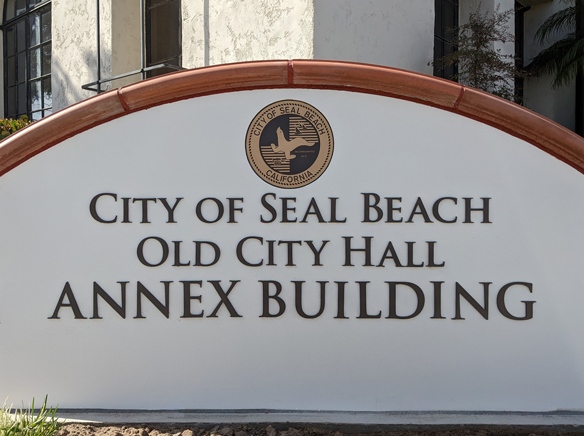The council decided this week to ban interior access to small living quarters in Seal Beach.
The vote was unanimous.
Following a public hearing, the City Council on Monday, Aug. 14, introduced state-mandated changes to the section of the Municipal Code concerning so-called “granny flats.” The small living quarters are known to the state government as accessory dwelling units or junior accessory dwelling units.
This was the last item on the agenda Monday night. It was also the one that drew the most public comment before and during the hearing.
The Sun counted 28 print outs of emails (not counting a duplicate) that were sent to the city before the meeting.
Most appeared to favor indoor access to the ADUs.
Five members of the public spoke during the public hearing. One person spoke during the public comment segment of the meeting.
One of the areas left to local governments to decide is whether there will be interior access to ADUs.
Since this was an introduction (or first reading) of the ordinance, the issue will have to return to the council before final adoption.
Technically, this was a Zoning Text Amendment to the section of the city code regulating accessory dwelling units.
The Planning Commission had recommended the council approve the new rules, but allow indoor access to the small units.
ADUs defined
An accessory dwelling unit, or ADU, is a secondary living space on a single-family property, according to the California Housing and Community Development Department.
“A [junior accessory dwelling unit] shall be a minimum of 150 square feet and a maximum of 500 square feet of gross floor area,” according to the draft of the proposed ordinance.
According to Planning Manager Shaun Temple, an ADU has exterior entrance, a kitchen, and a bathroom. “So it fully functions as its own unit,” Temple said during Monday’s meeting.
“And it can also be one or two bedrooms,” Temple said.
Public comments
District Three Planning Commissioner and 30-year Bridgeport resident Richard Coles urged the council to approve the version of the ordinance that staff originally recommended, which was the version that banned interior access to ADUs.
“When we looked at this, and I think we’ve got a great Planning Commission, but I think we got this one wrong,” Coles said.
Coles said Bridgeport was designed with growth limits to allow for views and privacy.
He saw the ADUs as presented as an extension of the house.
Elaine Murphy, of Corsair Way, disagreed. She said she was the first to build an ADU by right. She said Coles was not speaking on behalf of the Planning Commission.
She read from her email to the council. “It is critically important for Seal Beach residents to have the option to provide secondary access to their ADU units, if it is desired, for the intended ADU use,” she said.
“Interior access doesn’t intrude into the neighborhood or change its character, but should an emergency of any variety occur, secondary access will provide prompt access adding life-saving moments, critical for preserving life,” she said.
Background
The Planning Commission recently recommended that the council approve the ordinance. Planners recommended allowing interior access to ADUs. However, according to the report by Planning Manager Shaun Temple, city staff still recommended forbidding interior access.
“The law requires that ADUs and JADUs have a separate exterior entrance from the primary residence. It is left to the discretion of the local agencies as to whether or not interior access between the primary residence and an ADU would be allowed or prohibited,” Temple wrote.
The issue of interior access was important to Bridgeport residents who attended the Planning hearing on this same issue.
“In response to staff’s recommendation to prohibit interior access between the primary unit and the ADU, prior to the public hearing, 21 letters were received requesting this prohibition be removed, and 3 letters were received supporting this prohibition. Additionally, at the public hearing, 3 speakers requested the probation be removed, and 3 speakers were in support of the prohibition,” Temple wrote.
Planners voted 4-0 to remove the proposed ban on interior access. District Two Commissioner Dominic Massetti was absent.
Space doesn’t permit listing all the changes to the code that were proposed. Here are a few highlights:
* According to Temple’s report, local governments are not allowed to deny a permit for an ADU that was built without a permit before Jan. 1, 2018, unless there is a public safety issue.
* The report also says that cities can’t impose restrictions that prevent the construction of an ADU with at least 800 square feet with 4-foot front and side yard setbacks.




